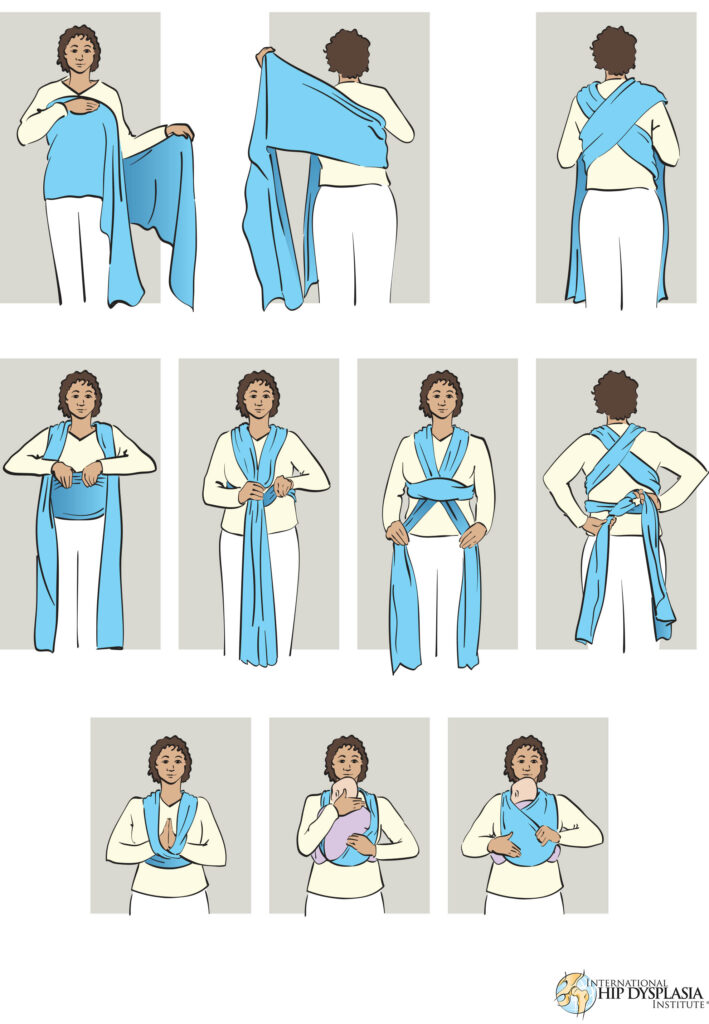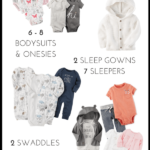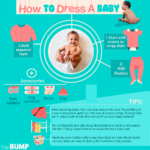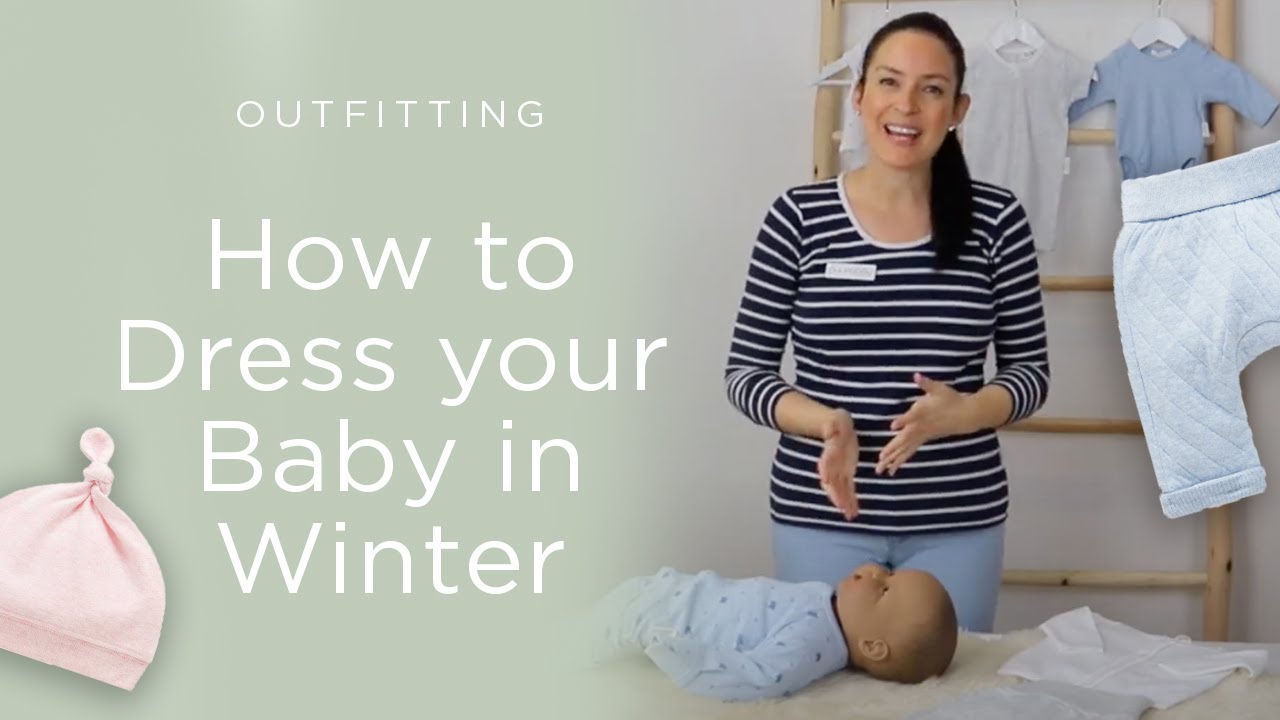To wear a baby wrap, start by placing the fabric over one shoulder, creating an X across your back. Then, secure your baby in the pouch formed by the fabric, ensuring they are snug and comfortable.
Baby wraps are a wonderful tool for parents, providing closeness and comfort. These versatile carriers allow for hands-free movement while keeping your little one safe and secure. Properly using a baby wrap can enhance bonding and support your baby’s development.
Many styles and fabrics are available, catering to different preferences and climates. Understanding how to wear a baby wrap correctly ensures both you and your baby enjoy the experience. As you explore the world of baby wearing, mastering this skill can make outings more enjoyable and stress-free.
Table of Contents
Introduction To Baby Wrapping
Baby wrapping is a wonderful way to keep your little one close. It involves using a fabric wrap to carry your baby securely. This method promotes bonding and provides comfort for both parent and child. Learning how to wrap a baby can enhance your parenting experience.
Benefits Of Using A Baby Wrap
- Hands-Free Convenience: Carrying a baby frees up your hands.
- Close Bonding: Keeps your baby close, fostering attachment.
- Comfort: Provides a cozy space for your baby.
- Easy Mobility: Allows movement without hassle.
- Versatile Styles: Offers various wrapping techniques.
Safety Considerations Before You Start
Prioritize safety while using a baby wrap. Keep these guidelines in mind:
- Check the Fabric: Use breathable and soft materials.
- Correct Position: Ensure the baby’s head is supported.
- Monitor Temperature: Avoid overheating your baby.
- Age Appropriateness: Only wrap suitable age groups.
- Secure Fit: Make sure the wrap is snug but not tight.
Following these tips ensures a safe and enjoyable experience for both you and your baby. Happy wrapping!

Credit: www.cgcid.org
Selecting The Right Baby Wrap
Choosing the right baby wrap is essential for comfort and safety. The right wrap helps you bond with your baby. It also allows you to go hands-free. Various factors play a role in making this decision.
Types Of Baby Wraps
Different types of baby wraps suit various needs. Here’s a quick overview:
| Type of Wrap | Description | Best For |
|---|---|---|
| Stretchy Wraps | Soft, elastic fabric that hugs the baby. | Newborns and younger babies. |
| Woven Wraps | Durable fabric with less stretch. Offers support. | Older babies and toddlers. |
| Ring Slings | Fabric secured with rings. Adjustable for easy use. | Quick trips and breastfeeding. |
| Mei Tais | Hybrid of wraps and structured carriers. Versatile. | All ages, especially toddlers. |
Material Matters: Finding The Perfect Fabric
The fabric of the baby wrap affects comfort and usability. Consider these materials:
- Cotton: Breathable and easy to wash.
- Linen: Lightweight and great for warmer weather.
- Bamboo: Soft, eco-friendly, and moisture-wicking.
- Blends: Combine different materials for added benefits.
Choose a fabric that feels good against your skin. Soft materials enhance comfort for both you and your baby. Check for durability to ensure it lasts long. Avoid materials that may irritate sensitive skin.
Preparation And Basic Techniques
Wearing a baby wrap can be a delightful experience. Proper preparation makes it easy and safe. Mastering a few basic techniques ensures comfort for both you and your baby. Here are key points to consider.
The Importance Of A Good Fit
A good fit is crucial for comfort and safety. An ill-fitting wrap can cause discomfort or even injury. Follow these tips for a proper fit:
- Choose the right size for your body type.
- Ensure the fabric is breathable and stretchy.
- Adjust the wrap to fit snugly around your baby.
Check these common signs of a good fit:
| Sign | Description |
|---|---|
| Snugness | The wrap should feel tight but not restrictive. |
| Comfort | Bo |

Credit: m.youtube.com
Front Wrap Cross Carry
The Front Wrap Cross Carry is a popular method for babywearing. It offers comfort and support for both parent and baby. This technique allows you to keep your little one close while keeping your hands free. Follow the steps carefully for a safe and snug fit.
Step-by-step Guide
- Prepare the wrap: Find a long baby wrap. Ensure it is clean and free of tangles.
- Find the center: Hold the wrap in half. Mark the center with a tag or a knot.
- Position the wrap: Place the center on your chest. Cross the ends behind your back.
- Bring the ends forward: Pull the ends over your shoulders. Keep them snug but not too tight.
- Cross the ends: Cross the ends in front of your baby. Make an “X” shape over your chest.
- Secure the wrap: Tuck the ends under the wrap on your back. Adjust for comfort.
- Place your baby: Position your baby in the wrap. Ensure their legs are in a natural position.
- Check the fit: Make sure your baby is secure. Their head should be visible and their chin off their chest.
Troubleshooting Common Issues
| Issue | Solution |
|---|---|
| Wrap is too loose | Pull the ends tighter for a snug fit. |
| Baby feels uncomfortable | Adjust the wrap to provide better support. |
| Wrap slips down | Ensure the wrap is properly secured at the back. |
| Baby’s legs are straight | Adjust the position for a natural “M” shape. |
- Practice in front of a mirror.
- Use a doll to practice before using with your baby.
- Ask a friend for help if needed.
Hip Wrap Cross Carry
The Hip Wrap Cross Carry is a popular way to carry your baby. It provides comfort for both you and your little one. This method allows you to have your hands free while keeping your baby close. Let’s explore how to get the position right and the benefits of hip carrying.
Getting The Hip Position Right
Follow these steps to achieve the correct hip position:
- Start with the wrap around your waist.
- Cross the fabric behind your back.
- Bring the ends of the wrap over your shoulders.
- Guide your baby into the pocket created by the wrap.
- Adjust the fabric for comfort and support.
Make sure your baby’s legs are in an M position. This means their knees are higher than their bottom. The wrap should support their back and keep them snug.
Advantages Of Hip Carrying
Hip carrying has many benefits:
- Hands-free convenience for parents.
- Allows easy interaction with your baby.
- Great for quick outings and errands.
- Evenly distributes weight on your hips.
- Helps with your baby’s development.
Hip carrying can soothe a fussy baby. It also encourages bonding between you and your child. Enjoy the closeness while going about your day!
Kangaroo Wrap Carry
The Kangaroo Wrap Carry is a popular way to hold your baby. It mimics the natural hold of a kangaroo. This carry keeps your little one close while allowing hands-free movement.
Embracing The Kangaroo Hold
The Kangaroo Hold provides comfort and security for your baby. It supports their head and neck. This position encourages bonding and promotes a sense of safety.
- Wrap the fabric around your waist.
- Place your baby against your chest.
- Ensure their legs are in an “M” shape.
- Adjust the fabric to support their back.
Check the fit regularly. Your baby should be snug but not restricted. Always ensure their airways are clear.
When To Use The Kangaroo Carry
The Kangaroo Carry is ideal for various situations:
| Situation | Benefits |
|---|---|
| Shopping | Hands-free convenience. |
| Traveling | Easy mobility in crowded places. |
| At Home | Stay close while doing chores. |
Use this carry for newborns and infants. It supports their development. Always monitor your baby’s comfort and adjust as needed.
Pocket Wrap Cross Carry
The Pocket Wrap Cross Carry is a popular baby-wearing technique. It offers a secure and cozy way to carry your baby. This method allows for easy access and promotes bonding.
Securing Your Baby In The Pocket
Start by folding the wrap in half. This creates a pocket for your baby. Follow these steps:
- Hold the wrap with the middle marker at your chest.
- Bring the wrap around your body, crossing the ends behind you.
- Pull the ends back to the front, crossing them over your chest.
- Slide your baby into the pocket, ensuring their legs are in an ‘M’ position.
Make sure your baby’s back is supported. Adjust the wrap to fit snugly. Check that your baby’s face is visible and not covered.
Ensuring Comfort And Support
Comfort is key for both you and your baby. Follow these tips:
- Ensure the wrap is tight but not too tight.
- Adjust the straps to distribute weight evenly.
- Check that your baby’s head and neck are well supported.
Keep your baby close to your body. This promotes security and warmth. Regularly check their position during use.
With practice, the Pocket Wrap Cross Carry becomes easy and enjoyable. Enjoy the closeness and convenience of baby-wearing!
Back Wrap Techniques
Mastering back wrap techniques opens up new possibilities for babywearing. A back carry allows your baby to see the world while keeping your hands free. This method is perfect for older babies and toddlers who enjoy an elevated view.
Preparing For Back Carrying
Preparation is key for a successful back carry. Follow these steps to ensure a smooth experience:
- Choose the right baby wrap. Look for a stretchy or woven fabric.
- Make sure your baby is comfortable. Dress them in soft clothing.
- Find a safe space to practice. Use a mirror for better visibility.
Before starting, check the following:
- Is your baby happy and alert?
- Are you both in a calm environment?
- Do you have enough space to move around?
Safety Tips For Back Wrapping
Safety is crucial in back wrapping. Follow these tips to ensure a secure carry:
| Tip | Description |
|---|---|
| Check for tightness | The wrap should be snug but not too tight. |
| Monitor your baby | Ensure your baby’s face is visible at all times. |
| Practice makes perfect | Rehearse with a doll before using your baby. |
| Watch for signs of distress | Look for signs of discomfort or fussiness. |
Remember to always prioritize safety. A well-secured baby wrap will keep your little one safe and happy.
Nursing In A Baby Wrap
Nursing while using a baby wrap can be simple and discreet. It allows for closeness with your baby during feeding time. Many parents find it a comfortable option. Below are tips for adjusting the wrap and ensuring privacy and comfort.
Adjusting The Wrap For Breastfeeding
Proper adjustment of the wrap is crucial for breastfeeding. Follow these steps to adjust it correctly:
- Start with the baby wrap securely tied around your body.
- Position your baby in an upright position.
- Loosen the fabric to create space for your baby’s head.
- Support your baby with one hand while lifting your breast with the other.
- Guide your baby to latch on comfortably.
Ensure the wrap is snug but not too tight. Your baby should feel secure while still being able to breathe freely.
Privacy And Comfort While Nursing
Nursing in public can feel daunting. Here are some tips to maintain privacy:
- Use a lightweight nursing cover.
- Choose a wrap with ample fabric for coverage.
- Find a quiet spot away from crowds.
Comfort is also essential. Consider these points:
- Wear a comfortable top that allows easy access.
- Choose a wrap that supports your back.
- Adjust the wrap to avoid strain on your shoulders.
With the right adjustments, nursing in a baby wrap can be a positive experience for both you and your baby.
Baby Wrap For Newborns
Using a baby wrap for newborns offers comfort and closeness. It keeps your baby snug while allowing you to be hands-free. Proper wrapping enhances safety and promotes bonding.
Special Considerations For Newborns
Newborns need special care in a wrap. Here are key points to consider:
- Head Support: Ensure the baby’s head is supported.
- Spinal Alignment: Keep the baby’s spine in a natural position.
- Breathability: Choose breathable fabric to avoid overheating.
- Safe Positioning: Avoid positions that can strain the neck.
Optimal Positions For Newborn Comfort
Choosing the right position is crucial. Here are recommended positions:
| Position | Description | Benefits |
|---|---|---|
| Fetal Position | Wrap the baby in a curled position. | Provides comfort and security. |
| Tummy-to-Tummy | Face the baby towards you. | Promotes bonding and easy access for nursing. |
| Hip Carry | Support the baby on your hip. | Good for older newborns with head control. |
Always check for signs of discomfort. Adjust the wrap as needed. Happy wrapping!
Baby Wrapping In Different Climates
Baby wrapping is great for bonding. It also keeps your little one close. Different climates require different techniques. Here’s how to wrap your baby for warm and cold weather.
Adapting To Warm Weather
Warm weather can be tricky for baby wrapping. Keep your baby cool and comfortable. Follow these tips:
- Choose breathable fabrics like cotton or linen.
- Opt for lighter wraps to reduce heat.
- Dress your baby in light clothing.
Wrap your baby snugly but not too tight. Ensure airflow around their body. Take breaks in the shade or indoors.
Here’s a quick reference table:
| Tip | Details |
|---|---|
| Fabric | Use breathable materials. |
| Layering | Dress baby lightly. |
| Position | Keep baby upright for airflow. |
Wrapping Up In Cold Conditions
Cold weather needs extra care. Keep your baby warm and cozy. Here are some tips:
- Use thicker, insulated wraps.
- Layer clothing for added warmth.
- Cover exposed skin with hats and mittens.
Wrap your baby snugly to trap heat. Make sure they can still move their arms and legs. Check your baby often for comfort.
Follow this simple checklist for cold weather:
- Choose a warm wrap.
- Layer clothing effectively.
- Ensure baby’s head and hands are covered.
Accessorizing Your Baby Wrap
Accessorizing your baby wrap can elevate your style. It also adds functionality. The right accessories make babywearing easier and more enjoyable. Let’s explore how to enhance your wrap experience.
Adding Functional Accessories
Functional accessories make babywearing practical. Here are some must-have items:
- Pacifier Clips: Keep pacifiers handy and off the ground.
- Diaper Clutch: Store diapers and wipes securely.
- Mini Backpack: Carry essentials without bulk.
- Water Bottle Holder: Stay hydrated while on the go.
Each accessory serves a purpose. Choose items that suit your lifestyle. Comfort and convenience are key.
Styling Tips For Chic Babywearing
Babywearing can be stylish and chic. Here are some tips to look fabulous:
- Choose the Right Fabric: Soft, breathable materials enhance comfort.
- Coordinate Colors: Match your wrap with your outfit.
- Layer Wisely: Use cardigans or light jackets for style.
- Accessorize: Add scarves or hats for flair.
Dress for the occasion. Feel confident while carrying your baby. Enjoy the bonding experience in style!
Cleaning And Maintenance
Proper cleaning and maintenance of your baby wrap are essential. It keeps the fabric safe and comfortable for your baby. Follow these guidelines for effective care.
Washing Your Baby Wrap
Washing a baby wrap is simple. Always check the care label first. Here are some steps to follow:
- Machine Wash: Use a gentle cycle.
- Cold Water: Wash in cold water to protect colors.
- Mild Detergent: Use a baby-safe detergent.
- Air Dry: Hang to dry to avoid shrinkage.
For stubborn stains, pre-treat them with a mild solution. Avoid bleach and fabric softeners. These can harm the fabric and irritate your baby’s skin.
Ensuring Longevity Of The Fabric
Taking care of your baby wrap extends its life. Follow these tips:
- Avoid Direct Sunlight: Keep it out of direct sunlight to prevent fading.
- Store Properly: Fold neatly and store in a dry place.
- Regular Inspections: Check for loose threads and wear.
- Rotate Usage: Use multiple wraps to reduce wear on one.
By following these practices, you ensure your baby wrap remains safe and functional.
Troubleshooting Common Wrapping Problems
Baby wraps can be a wonderful tool for parents. Yet, issues may arise during use. Here, we will tackle common problems and provide solutions.
Dealing With Slipping Knots
Slipping knots can be frustrating. They can make the wrap feel unsafe. Follow these tips to secure your wrap:
- Tighten the knot: Pull the ends firmly before securing.
- Double knot: Tie an additional knot for extra security.
- Use a slip knot: This allows for easy adjustments.
Check your wrap frequently. Make adjustments as needed to ensure safety.
Adjusting For Baby’s Growth
As your baby grows, adjustments are necessary. A snug fit is crucial. Here’s how to adjust your wrap:
- Reassess the wrap size. Make sure it fits your baby well.
- Reposition the fabric. This provides support as your baby grows.
- Consider different wrapping styles. Explore options that fit larger babies.
Monitor your baby’s comfort. A well-adjusted wrap ensures a safe and cozy experience.
Conclusion: Embracing The Baby Wrap Lifestyle
Wearing a baby wrap transforms parenting into a joyful experience. It creates a special bond between you and your baby. Enjoy the warmth, comfort, and closeness that wraps provide.
The Bonding Experience
Baby wraps offer many benefits for both parent and child. Here are some key points:
- Skin-to-Skin Contact: Helps regulate your baby’s temperature.
- Enhanced Communication: Babies respond to your voice and heartbeat.
- Emotional Security: Your baby feels safe and loved.
- Ease of Movement: Frees your hands for daily tasks.
Bonding through babywearing promotes trust and attachment. As you carry your baby, they learn your rhythms and movements. This connection fosters emotional development.
Joining The Babywearing Community
Babywearing is more than a trend. It’s a supportive community. Here’s how you can join:
- Find local babywearing groups.
- Attend workshops for tips and techniques.
- Share your experiences online.
- Ask for help and advice from others.
Engaging with the community brings new friendships. You gain valuable insights and support. Enjoy gatherings, swap stories, and learn from fellow parents.
Embrace the baby wrap lifestyle. Experience the joy of bonding while enjoying freedom. Your journey with your baby becomes richer and more fulfilling.
Credit: www.kyndbaby.com
Frequently Asked Questions
How Do I Choose The Right Baby Wrap?
Selecting the right baby wrap depends on your comfort, fabric type, and your baby’s age and weight.
What Are The Benefits Of Using A Baby Wrap?
Baby wraps promote bonding, provide hands-free convenience, and can soothe fussy babies by mimicking the womb.
Can I Breastfeed While Using A Baby Wrap?
Yes, many baby wraps allow for discreet breastfeeding, offering comfort and privacy for both you and your baby.
How To Properly Tie A Baby Wrap?
Follow the manufacturer’s instructions, ensuring the wrap is snug but not too tight, supporting your baby securely.
Is A Baby Wrap Safe For Newborns?
Yes, baby wraps are safe for newborns when used correctly, providing proper support and keeping them close to you.
Conclusion
Wearing a baby wrap can be a delightful experience for both you and your little one. It promotes bonding and provides comfort. Practice makes perfect, so don’t hesitate to try different styles. Embrace this journey, and enjoy the closeness it offers.
Your baby will love the warmth and security.







